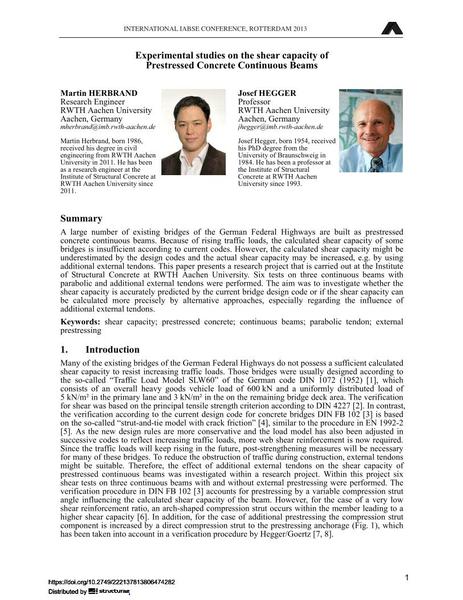Experimental studies on the shear capacity of Prestressed Concrete Continuous Beams

|
|
|||||||||||
Détails bibliographiques
| Auteur(s): |
Martin Herbrand
Josef Hegger |
||||
|---|---|---|---|---|---|
| Médium: | papier de conférence | ||||
| Langue(s): | anglais | ||||
| Conférence: | IABSE Conference: Assessment, Upgrading and Refurbishment of Infrastructures, Rotterdam, The Netherlands, 6-8 May 2013 | ||||
| Publié dans: | IABSE Conference, Rotterdam, May 2013 | ||||
|
|||||
| Page(s): | 84-85 | ||||
| Nombre total de pages (du PDF): | 8 | ||||
| Année: | 2013 | ||||
| DOI: | 10.2749/222137813806474282 | ||||
| Abstrait: |
A large number of existing bridges of the German Federal Highways are built as prestressed concrete continuous beams. Because of rising traffic loads, the calculated shear capacity of some bridges is insufficient according to current codes. However, the calculated shear capacity might be underestimated by the design codes and the actual shear capacity may be increased, e.g. by using additional external tendons. This paper presents a research project that is carried out at the Institute of Structural Concrete at RWTH Aachen University. Six tests on three continuous beams with parabolic and additional external tendons were performed. The aim was to investigate whether the shear capacity is accurately predicted by the current bridge design code or if the shear capacity can be calculated more precisely by alternative approaches, especially regarding the influence of additional external tendons. |
||||
